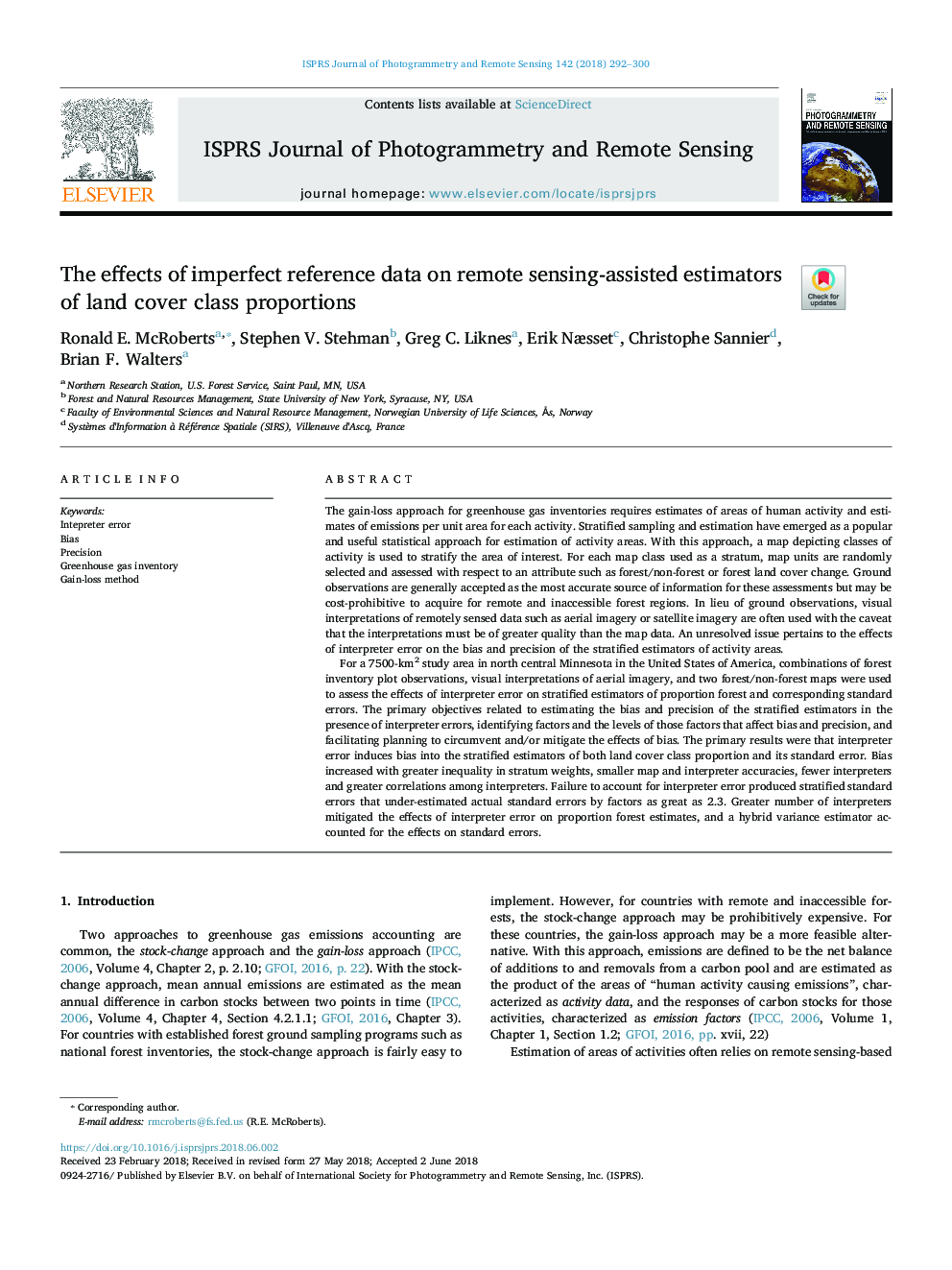| Article ID | Journal | Published Year | Pages | File Type |
|---|---|---|---|---|
| 6949096 | ISPRS Journal of Photogrammetry and Remote Sensing | 2018 | 9 Pages |
Abstract
For a 7500-km2 study area in north central Minnesota in the United States of America, combinations of forest inventory plot observations, visual interpretations of aerial imagery, and two forest/non-forest maps were used to assess the effects of interpreter error on stratified estimators of proportion forest and corresponding standard errors. The primary objectives related to estimating the bias and precision of the stratified estimators in the presence of interpreter errors, identifying factors and the levels of those factors that affect bias and precision, and facilitating planning to circumvent and/or mitigate the effects of bias. The primary results were that interpreter error induces bias into the stratified estimators of both land cover class proportion and its standard error. Bias increased with greater inequality in stratum weights, smaller map and interpreter accuracies, fewer interpreters and greater correlations among interpreters. Failure to account for interpreter error produced stratified standard errors that under-estimated actual standard errors by factors as great as 2.3. Greater number of interpreters mitigated the effects of interpreter error on proportion forest estimates, and a hybrid variance estimator accounted for the effects on standard errors.
Related Topics
Physical Sciences and Engineering
Computer Science
Information Systems
Authors
Ronald E. McRoberts, Stephen V. Stehman, Greg C. Liknes, Erik Næsset, Christophe Sannier, Brian F. Walters,
